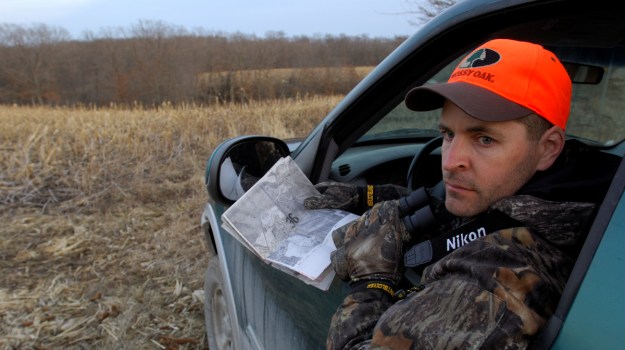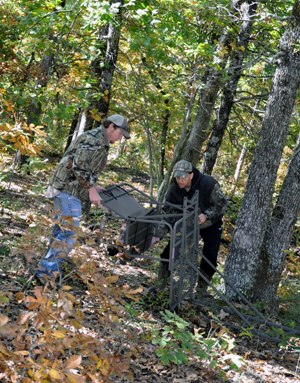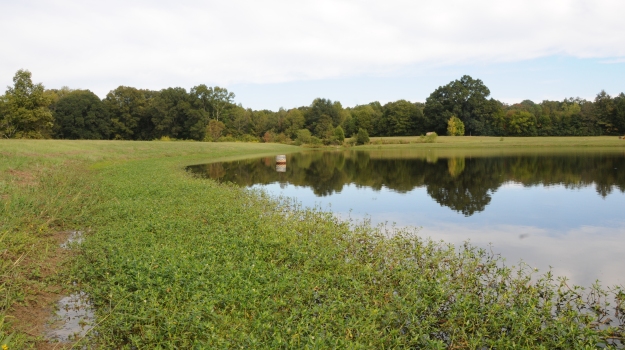
Editor’s Note: Allen Treadwell from Seligman, Missouri, was a world champion in the international skeet shooting discipline and was on the Olympic team as a shotgun shooter. He was first sponsored by Bass Pro Shops as an Olympic shotgun shooter, then on the Bass Pro Shops’ professional hunting team and the company’s “King of Bucks” TV show. He’s also been featured on the “Winchester Rack Masters” TV show. His main focus is white-tailed deer. Treadwell says, “I wear Mossy Oak on both shows, but I’d wear Mossy Oak even if I wasn’t on television. I believe in the Mossy Oak patterns, and I know they help me take more deer. But more importantly, I believe in the Mossy Oak philosophy of family, fraternity, conservation and passing on our outdoor heritage. I like that Mossy Oak has more than one pattern. When I’m deer hunting, I like to wear Mossy Oak Break-Up Infinity. When I’m turkey hunting, most of the time, I wear Obsession. Both of these patterns are open patterns that blend in with the terrain where I hunt. In early deer season, when there's still a lot of green in the woods, I wear Obsession rather than the Break-Up Infinity.”
While hunting in Kansas, one of the toughest bucks that I ever took was Big 8. I found him in the early season. My outfitter saw Big 8 in a part of the ranch that he never had seen him before. The buck was with a doe during the rut. So, the first thing we did was to put out some trail cameras to try and define Big 8’s home range.
 Here’s an important key to consistently taking big bucks. Once you find a big buck, try to define where the buck spends most of his time, which is probably his home range. Never forget that trail cameras can add or take away inches of antlers, depending on how high or how low the cameras are set-up or the camera’s angle to the deer. Too, this measurement depends on whether the photo has been taken at night or in the daytime, or if the trail camera pictures have been taken when the buck’s antlers are hard or in the velvet.
Here’s an important key to consistently taking big bucks. Once you find a big buck, try to define where the buck spends most of his time, which is probably his home range. Never forget that trail cameras can add or take away inches of antlers, depending on how high or how low the cameras are set-up or the camera’s angle to the deer. Too, this measurement depends on whether the photo has been taken at night or in the daytime, or if the trail camera pictures have been taken when the buck’s antlers are hard or in the velvet.
Once we pinpointed Big 8’s home range during the rut, then when Kansas’s rifle season came in after the rut, we knew where to look for him. Most of the time after the rut, I like to hunt over a food source, because the bucks expend a lot of energy and usually lose weight during the rut. For this reason, they’re generally hungry after the rut. So, they need a lot of food to put on some of the weight they’ve lost during the rut, to make it through the harsh winter.
Big 8 was a mature deer. After the rut, he wasn’t showing-up during daylight hours at all. Every photo we had of him was taken after dark. Remember, the only time this buck had been seen was one time during the rut by the landowner. As luck would have it, when I went out to Kansas to hunt this buck, the area had a full moon. In my opinion, a full moon causes the deer to move even more at night than usual and not move at all during the daylight hours. We hunted this property for 3 days before we even tried to take Big 8. We had bad wind conditions and a bad moon phase, and the conditions just weren’t right for hunting. Our trail cameras had shown that this buck was going to a little bushy draw to bed down just before daylight. Then he came out of the draw at dark and went to the crop field to feed. However on the fourth day, we got within 200 yards of his bedding area. The buck stood-up out of his bed just before last shooting light, and I shot him with my .300 Winchester Short Magnum (also known as .300 WSM) with a Winchester 180 grain Ballistic Silver Tip bullet. It took us 4 days to finally take Big 8. He scored 161-2/8, a whopper 8 point.
We had been using trail cameras and binoculars for 30 days to try and pinpoint where our chances would be best to get a shot at this buck. Then because I knew how the bullet would perform at 200 yards and more, I was able to make the shot. Once again, when preparation meets opportunity, you can score.



























